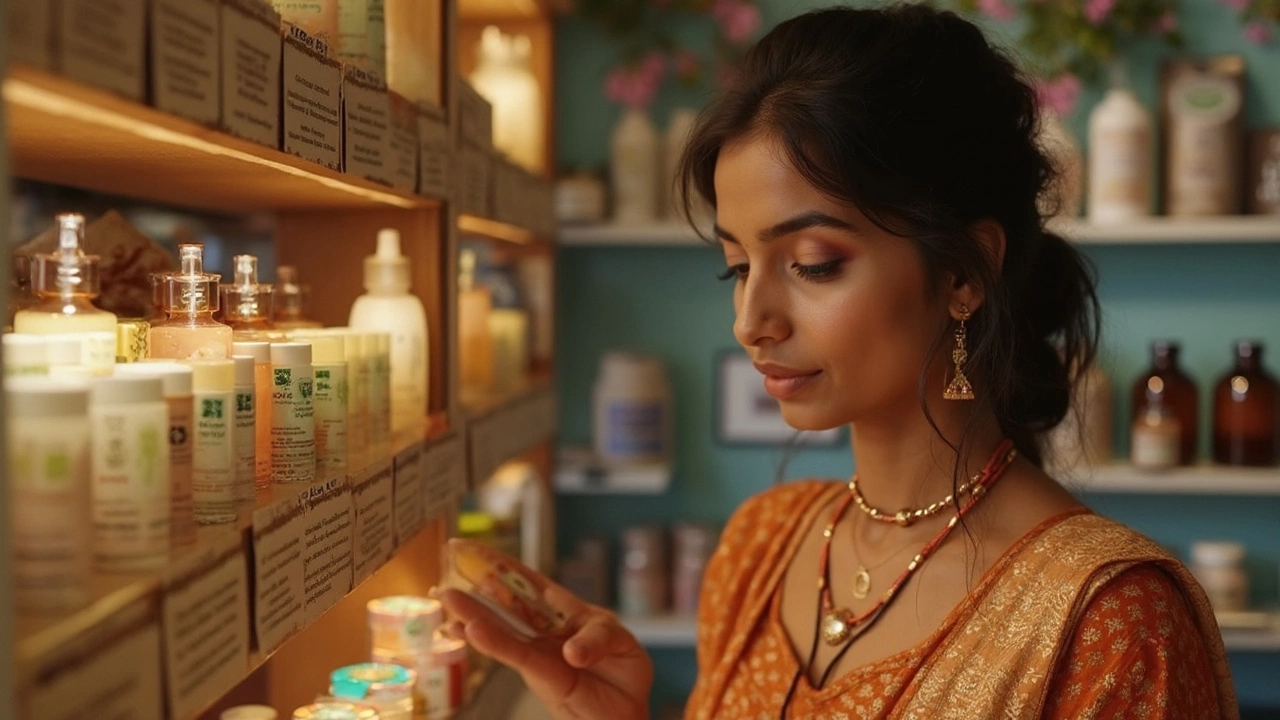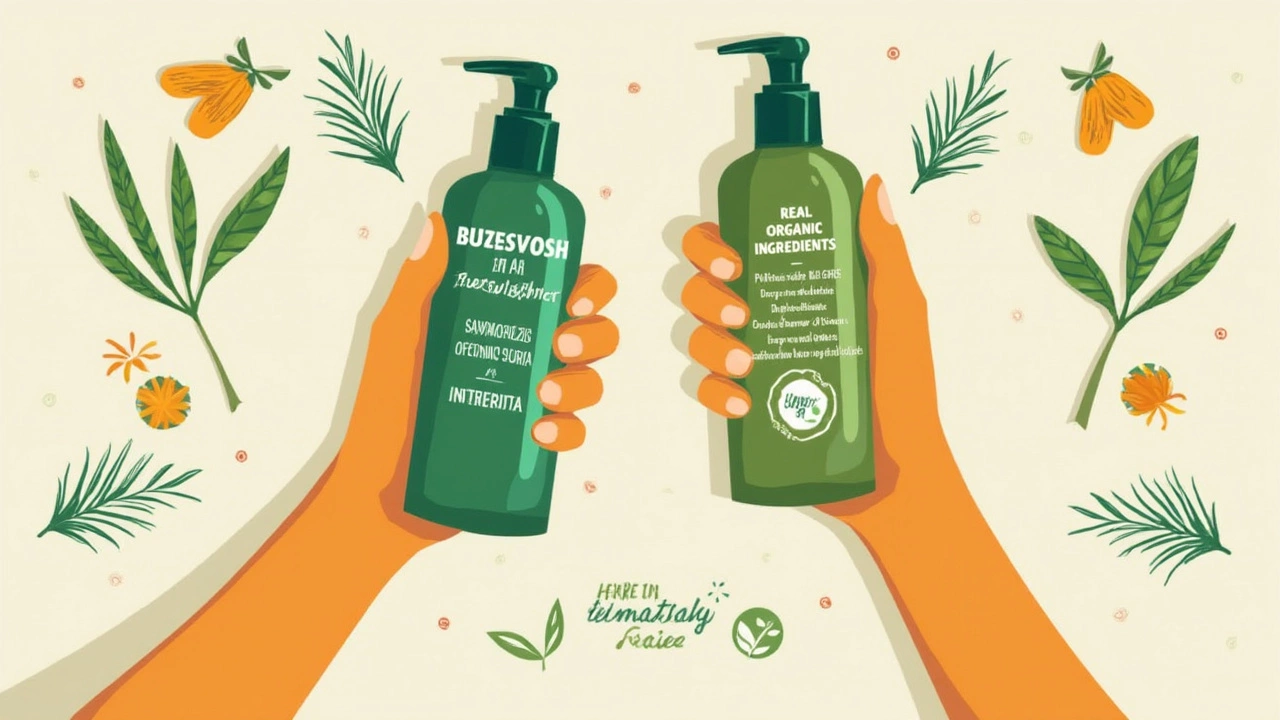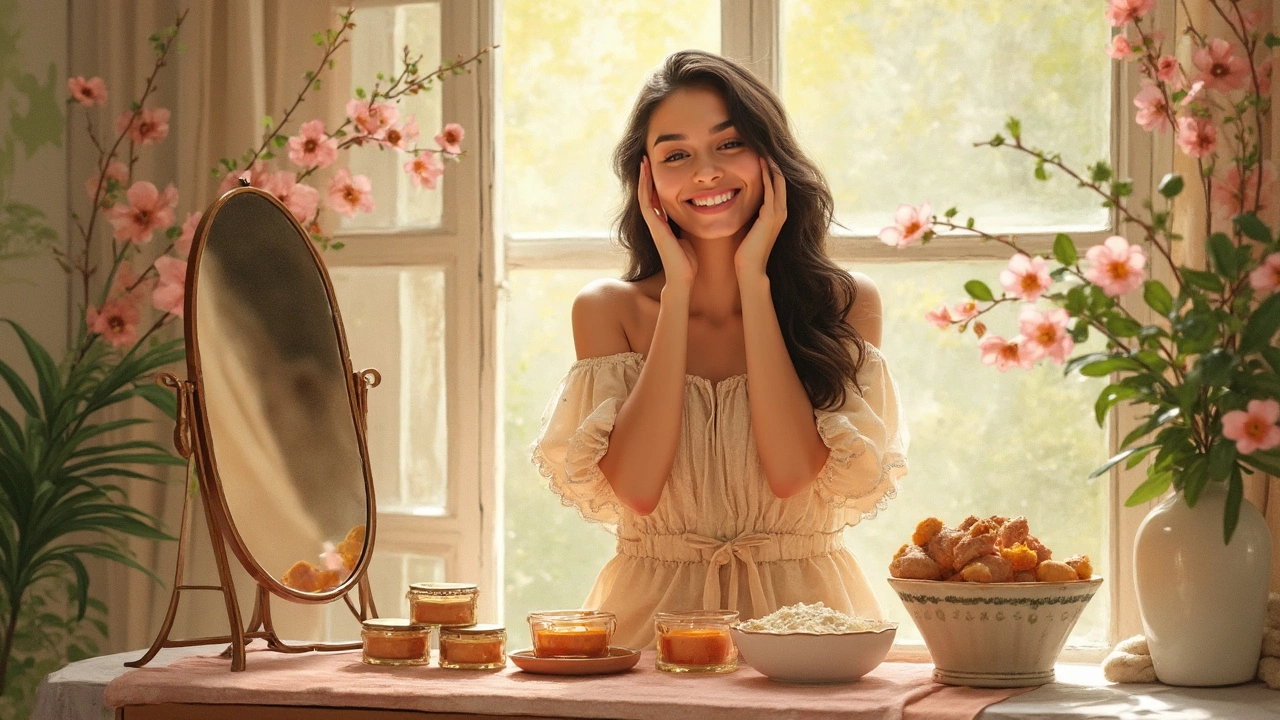
Everyone’s talking about clean beauty, but what does ‘healthy’ really mean when it comes to cosmetics? Honestly, the label doesn’t always match what’s in the bottle. I used to just grab whatever had the prettiest green leaf or said ‘natural’ on the package, but I’ve learned those claims don’t mean much—especially after Orin’s eczema flared up from a supposedly gentle moisturizer.
People want safe stuff—nobody wants to smear questionable chemicals all over their faces. Here’s something wild: in the US, the FDA only bans about 11 cosmetic ingredients, while the EU bans over 1,300. That gap is huge! So, if you want the healthiest possible products, you’ve got to pay attention to the details yourself.
- Why 'Healthy' Cosmetics Matter
- Ingredients: Which to Seek & Avoid
- Brands That Actually Walk the Talk
- Tips for Building Your Healthy Routine
- Watch Out: Greenwashing & Marketing Tricks
Why 'Healthy' Cosmetics Matter
Our skin isn’t just a barrier; it actually absorbs a lot of what we put on it. That means every lotion, foundation, or lip balm can make its way into your body. Here’s a jaw-dropper: a study from UC Berkeley found teenage girls who switched to healthiest cosmetics—free of certain harmful chemicals—saw a 27-45% drop in chemical levels in their urine after just three days. That’s how fast these ingredients leave your system.
Look, we all have busy lives, and sometimes we just want a quick fix. But over time, those little exposures can add up. Even tiny amounts of things like parabens, phthalates, and formaldehyde-releasing preservatives may mess with hormones or cause irritation. People with sensitive skin (hello, Selene and I!) know all too well about mystery rashes or itching after trying new products.
Here’s how ingredient safety rules look around the world:
| Region | # Ingredients Banned |
|---|---|
| United States | 11 |
| European Union | 1,300+ |
| Canada | 500+ |
| Japan | 500+ |
If you have kids, you know how careful you are with what goes in their mouths. Turns out, what goes on their skin matters just as much. When brands actually care about real, safe ingredients—and prove it with certifications or third-party tests—you’re less likely to end up with reactions, breakouts, or health worries down the line.
So, whether you want to avoid allergies, play it safe for your family, or just feel good about what’s touching your skin, it’s smart to get picky about what you use. The right choice can make a world of difference in how your skin feels, how healthy it looks, and your long-term well-being.
Ingredients: Which to Seek & Avoid
Finding healthiest cosmetics starts with flipping that label and looking at the ingredients list, not just the brand name. Some companies love to plaster 'organic' or 'pure' all over their packaging, but the real story is in those tiny letters on the back.
Let’s start with what you actually want in your routine. Look for things you’d find in a farmer’s market—plant oils (like jojoba or sunflower), real extracts (aloe, chamomile), and mineral-based pigments. Food-grade preservatives like potassium sorbate keep products safe without being harsh.
- Go For:
- Certified organic plant oils (coconut, olive, argan)
- Natural butters (shea, cocoa)
- Real botanical extracts (rose, calendula, tea tree)
- Mineral sunscreens (zinc oxide, titanium dioxide that’s non-nano)
- Essential oils (but always patch test—some people react!)
Now, for the stuff you want to keep away from kids or yourself. Synthetic fragrances are high on my no-go list, especially after reading about how they can be packed with hundreds of different chemicals. Parabens and phthalates have been called out for possible hormone disruption. Then there are the tricky ones like sodium lauryl sulfate (SLS), which can irritate skin—just ask anyone who’s battled dryness or itching.
- Avoid:
- Parabens (methylparaben, propylparaben, etc.)
- Phthalates (often hidden under “fragrance” or “parfum”)
- Formaldehyde releasers (DMDM hydantoin, imidazolidinyl urea)
- Triclosan (can mess with hormones and the environment)
- Petroleum-based ingredients (mineral oil, paraffin, petrolatum)
- Sodium lauryl/laureth sulfate (SLS/SLES)
Here’s a quote from Mia Davis, former Head of Environment, Health & Safety at Credo Beauty, that just hits home:
"The beauty industry isn’t strongly regulated, so it’s up to us to look for safer options and pay attention to ingredient lists. Transparency is everything."
I know, lists can get overwhelming, so here’s a simple table for a quick check:
| Ingredient to Check | Is it Safe? |
|---|---|
| Jojoba Oil | Yes |
| Mineral Oil | No |
| Phthalates | No |
| Zinc Oxide (non-nano) | Yes |
| Sodium Lauryl Sulfate | No |
| Calendula Extract | Yes |
Pro tip: Just because something is listed as 'natural' doesn't mean it's safe for everyone. Patch testing matters, especially if you or your kids have sensitive skin. Skin loves simplicity—fewer ingredients usually means less to react to.

Brands That Actually Walk the Talk
There’s a lot of noise out there, but a few brands actually live up to their claims in the healthiest cosmetics space. You want companies that tell you exactly what’s inside, skip out on toxic stuff, and have some kind of third-party certifications. It’s not just about pretty labels—it’s about real ingredients and science-backed transparency.
Here are a few brands that have built their reputation on honest, healthy formulas:
- Juice Beauty gets a lot of love for using USDA-certified organic ingredients in most of its products. They even make their own botanical juice base instead of water, which means more active ingredients and less filler.
- 100% Pure is super open about what they use, and they ditch synthetic dyes completely (they color products with fruit and vegetable pigments!). They also provide batch test results for heavy metals—huge for makeup safety.
- True Botanicals is all about verified nontoxic formulas. Nearly every product is MADE SAFE certified, and they show clinical trial results—not just before-and-after photos.
- RMS Beauty uses simple, raw, food-grade ingredients in their balms and foundations, so even my kid with the most sensitive skin can borrow my highlighter without worry.
- Ilia Beauty has spent a lot on R&D to create SPF and color makeup with clean ingredients that actually work and don’t cause breakouts. They’re transparent about sourcing and sustainability too.
Some brands say all the right things but don’t back it up. Certifications make it easier to sort the real deal from the fakers. Here’s a handy breakdown of what to look for:
| Certification | What It Means |
|---|---|
| USDA Organic | 95%+ certified organic ingredients, super strict rules |
| COSMOS/Ecocert | Standard for organic/natural cosmetics, recognized internationally |
| MADE SAFE | No known toxic chemicals, endocrine disruptors, or carcinogens |
| EWG Verified | Ingredients checked for health hazards, transparency required |
Don’t just take my word for it—here’s what Mia Davis, Head of Impact at Credo Beauty (a retailer that only sells clean brands), says:
“Transparency is the number one marker of a truly healthy brand. If they’re not willing to share their ingredient lists and sourcing, or get outside certifications, something’s up.”
A few quick tips when scouting brands:
- Look for brands that update their formulas and adapt as new safety data rolls in.
- Brands should share batch or toxicity test results, not just lists of what isn’t included.
- Check their websites for full ingredient lists, not vague ‘naturally derived’ claims.
When you know which brands are serious, you can build a routine you trust—no guessing, no gimmicks.
Tips for Building Your Healthy Routine
Want to switch up your daily beauty routine but not sure where to start? That’s totally normal—ditching your old standbys for something healthier feels confusing at first. Start with your skin essentials: cleanser, moisturizer, sunscreen, and the makeup you wear the most. No need to go all-in at once or dump everything in your bathroom trash.
Here’s what’s helped me (and saved my wallet from those impulse hauls):
- Read the ingredient list first. Simple rule but super effective. The shorter the list and the more recognizable the words, the safer the bet. You’re aiming for ingredients like aloe, shea butter, plant oils, and natural minerals. If you see ‘fragrance,’ ‘parabens,’ or ‘phthalates,’ try something else instead.
- Swap one product at a time. For me, it was foundation. Once you’ve finished a bottle or tube, replace it with a cleaner version. You’re less likely to panic-buy or choose a dud this way.
- Patch test everything. Even healthy and organic stuff can make you itch. Dab a bit behind your ear or inner elbow, especially if you’ve got sensitive skin like my daughter Selene.
- Don’t forget sun protection. Healthy skincare means broad-spectrum sunscreen that uses zinc oxide or titanium dioxide, not chemical filters. Bonus: some mineral sunscreens work as light foundation, too.
- Stick with brands that show their full ingredient lists and certifications—think USDA Organic or Ecocert. Some brands will even tell you where they source their ingredients, which is a bonus.
My quick hack? Download the EWG’s Skin Deep app to scan barcodes in the store for quick ratings. I only wish I’d found it sooner—it’s saved me from so many useless ‘natural’ buys.

Watch Out: Greenwashing & Marketing Tricks
This part always gets me riled up. Companies know shoppers are searching for the healthiest cosmetics and ‘organic skincare,’ so they use clever marketing to look cleaner than they really are. That’s greenwashing—and it’s everywhere on beauty shelves. You’d think anything with a leaf or the word ‘natural’ is healthy, right? Not so fast.
There’s barely any regulation around these terms in the U.S. ‘Natural,’ ‘clean,’ ‘pure’—there are no legal requirements for these words, so some brands put a tiny dash of aloe or chamomile in a formula full of synthetics, just to slap on a nature-inspired label.
Here are some of the most common greenwashing tricks to look out for:
- Natural Claims: If you spot ‘natural’ on a product, check the ingredient list. Real natural products don’t hide their full lists, and the first few ingredients should actually be things from nature.
- Green Packaging: Bottles in earthy colors, plants, or eco symbols don’t mean the formula is any safer or cleaner. That’s just design.
- Organic Labels: Unless it’s USDA Certified Organic or carries a legit third-party seal, ‘organic’ can mean almost nothing. U.S. law only requires products with at least 95% certified organic ingredients (excluding water and salt) to bear the seal.
- Hypoallergenic/Non-Toxic: No law defines these terms for cosmetics. Brands can use them even if their ingredients aren’t tested for allergens or toxins.
- Short Ingredient Lists: Sometimes you see a tiny list, but the worst offenders might be hidden as ‘fragrance/parfum’ or a blend of chemicals under one name. If you can’t find a detailed breakdown, that’s a red flag.
Check out this table for what some popular buzzwords really mean:
| Label/Buzzword | What It Actually Means |
|---|---|
| Natural | No legal standard. May still have synthetic chemicals. |
| Clean | Unregulated. No guarantee of safety or ingredient restrictions. |
| Organic | Only matters if ‘Certified’ (e.g., USDA or Ecocert); otherwise meaningless. |
| Dermatologist-tested | May only mean it touched a dermatologist's desk, not safety proven. |
| Fragrance-free | Sometimes still contains masking fragrance or essential oils. |
| Hypoallergenic | Not defined by law—can still contain allergens. |
If you want the real deal, always:
- Look for third-party certifications like USDA Organic, Ecocert, or COSMOS.
- Read the ingredient list — first five ingredients make up most of the formula.
- Google anything you don’t recognize; don’t just trust the front label.
The bottom line: the best defense against greenwashing is to get nosey. Flip the bottle, do a little digging, and don’t buy just because the package says ‘green’ or ‘healthy.’ Your skin deserves more than a marketing gimmick.
 Hair Care
Hair Care